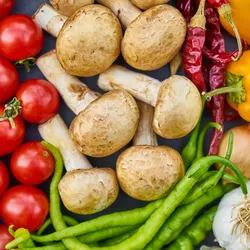
Level 1:
Efficient irrigation helps farmers grow crops by giving them the right amount of water. There are different ways to do it. One way is called drip irrigation. It slowly gives water to the roots of plants. Another way is sprinkler irrigation, where water comes out of sprinklers like rain. A third way is pivot irrigation, which uses rotating arms to water large fields. Farmers need to know what each crop needs and adjust watering accordingly. Technology can also help with sensors that tell when plants need water. Efficient irrigation saves water and helps crops grow big and healthy.
Level 2:
Proper irrigation is crucial for growing crops effectively. It ensures plants get the right amount of water they need to thrive. There are different methods to achieve this. Drip irrigation slowly delivers water directly to the roots of plants. Sprinkler irrigation simulates rainfall by spraying water over crops. Pivot irrigation uses rotating arms to cover large areas with water. Farmers must understand each crop’s water needs and adjust irrigation accordingly. Technology, like sensors, can help monitor moisture levels and optimize watering. Efficient irrigation saves water and promotes healthy crop growth. It’s an important skill for farmers to master.
Full Story:
Whether you’re a seasoned farmer or just starting out, understanding the importance of proper irrigation methods can significantly impact your agricultural success. In this video, we will explore practical and efficient ways to irrigate your crops, ensuring they receive the water they need for optimal growth and productivity. Let’s dive right in!
The Significance of Efficient Irrigation:
Efficient irrigation plays a vital role in agriculture by delivering the right amount of water to crops at the right time. It ensures that plants receive adequate hydration without wasting precious resources or causing waterlogged conditions. By optimizing water usage, farmers can save costs, conserve water, and ultimately enhance their crop yields.
Drip Irrigation: A Game-Changer in Agriculture:
Drip irrigation is a revolutionary technique that involves delivering water directly to the plant’s roots in a slow and precise manner. Unlike traditional sprinkler systems, drip irrigation minimizes water loss due to evaporation and targets specific areas, reducing weed growth and disease spread. This method maximizes water efficiency, reduces runoff, and enables better nutrient absorption, leading to healthier plants and higher crop yields.
Sprinkler Irrigation: Balancing Efficiency and Coverage:
Sprinkler irrigation is a commonly used method where water is distributed through overhead sprinklers, simulating rainfall. This technique provides good coverage across larger areas, making it suitable for various crops. However, it’s crucial to optimize the sprinkler system by adjusting water pressure, nozzle selection, and spacing to ensure uniform water distribution. By fine-tuning these factors, farmers can achieve better irrigation efficiency and improved crop yields.
Pivot Irrigation: Precision and Flexibility Combined:
Pivot irrigation systems are popular for irrigating large-scale agricultural fields. These systems consist of long, rotating arms with sprinklers attached, allowing for comprehensive coverage. The pivoting motion ensures even water distribution, and the flexibility to adjust the system’s speed and direction caters to different crop types and field layouts. Pivot irrigation minimizes water waste and offers high precision, resulting in enhanced crop growth and consistent yields.
Tailoring Irrigation to Crop Needs:
Understanding the water requirements of specific crops is essential for maximizing yields. Different plants have varying tolerance levels to moisture stress, and their irrigation needs may differ throughout their growth stages. By considering factors such as soil type, weather conditions, and crop maturity, farmers can develop customized irrigation schedules and techniques that suit their crops best. This approach ensures that plants receive the right amount of water at each growth stage, leading to optimized yields.
Monitoring and Automation for Efficient Water Management:
Incorporating technology-driven tools and sensors into irrigation systems can significantly improve water management and crop productivity. These devices can monitor soil moisture levels, weather forecasts, and plant water needs in real-time, allowing for precise irrigation control. Automated systems can adjust watering schedules, duration, and even detect pipe leaks, ensuring efficient water usage and reducing manual labor. By harnessing these advancements, farmers can optimize irrigation practices and maximize their crop yields.
Conclusion:
Efficient irrigation techniques are fundamental to successful farming and maximizing crop yields. Whether you choose drip irrigation for precision, sprinkler systems for comprehensive coverage, or pivot irrigation for flexibility, tailoring your approach to the specific needs of your crops is paramount. By embracing technology and automation, monitoring soil moisture levels, and employing smart water management practices, farmers can optimize their irrigation methods and achieve impressive results.
Remember, implementing effective irrigation techniques not only enhances crop yields but also promotes sustainability by conserving water resources and reducing environmental impact.
Questions:
What is the purpose of irrigation in farming?
Answer: The purpose of irrigation in farming is to provide water to plants for their growth and development.
Why is efficient irrigation important in agriculture?
Answer: Efficient irrigation is important in agriculture because it helps in achieving maximum productivity while minimizing water wastage and resource usage.
Do you think drip irrigation or sprinkler irrigation is a better technique for watering crops?
Answer: This is a subjective question and may vary based on specific circumstances and preferences. Both drip irrigation and sprinkler irrigation have their advantages and are suitable for different crop types and field sizes.
How does fine-tuning irrigation techniques contribute to improved crop yields?
Answer: Fine-tuning irrigation techniques helps in making small adjustments to optimize the accuracy and effectiveness of water delivery, which can result in improved crop growth and higher yields.
Can automation and sensor technology help farmers manage irrigation more effectively?
Answer: Yes, automation and sensor technology can assist farmers in managing irrigation more effectively. These technologies provide real-time information on soil moisture levels, weather conditions, and plant water needs, allowing for precise control and efficient water management.
Fill in the Blanks:
runoff, Runoff, Precision, nutrient, Irrigation, Maturity, revolutionary, irrigation, optimal, tolerance, absorption, minimize, sensors, Productivity, efficient, uniform, productivity, Uniform, Sensors, precision, incorporate, target, Revolutionary, maturity, evaporation, Efficient, Tolerance
Title: Maximize Crop Yields with Effective ________ Techniques!
Introduction:
Welcome to our YouTube video where we delve into the world of effective ________ techniques and how they can help you maximize crop yields.
In this video, we will explore practical and ________ ways to irrigate your crops, ensuring they receive the water they need for ________ growth and ________.
The Significance of ________ Irrigation:
Efficient irrigation plays a vital role in agriculture by delivering the right amount of water to crops at the right time.
Drip Irrigation: A Game-Changer in Agriculture:
Drip irrigation is a ________ technique that involves delivering water directly to the plant’s roots in a slow and precise manner.
Unlike traditional sprinkler systems, drip irrigation minimizes water loss due to ________ and targets specific areas, reducing weed growth and disease spread.
This method maximizes water efficiency, reduces ________, and enables better ________ ________, leading to healthier plants and higher crop yields.
However, it’s crucial to optimize the sprinkler system by adjusting water pressure, nozzle selection, and spacing to ensure ________ water distribution.
Pivot Irrigation: ________ and Flexibility Combined:
Pivot irrigation systems are popular for irrigating large-scale agricultural fields.
Pivot irrigation minimizes water waste and offers high ________, resulting in enhanced crop growth and consistent yields.
Different plants have varying ________ levels to moisture stress, and their irrigation needs may differ throughout their growth stages.
By considering factors such as soil type, weather conditions, and crop ________, farmers can develop customized irrigation schedules and techniques that suit their crops best.
Monitoring and **Automation **for Efficient Water Management:
Incorporating technology-driven tools and ________ into irrigation systems can significantly improve water management and crop productivity.
We want to do it in the best way, so we say “optimal.” ________ is doing things and getting good results.
________ is when something changes a lot.
We want to use less water, so we try to ________.
We want to put water in the right place, so we ________ it.
________ is when water goes away.
________ means the same all over.
________ is when we can handle things without getting upset.
We bring things together, that’s ________.
________ are things that tell us about our surroundings.
________ is when something or someone has reached full growth or development.
Vocabulary:
Efficient: (adjective) Achieving maximum productivity with minimum wasted effort or resources.
Irrigation: (noun) The process of supplying water to crops or plants to support their growth and development.
Optimal: (adjective) Best or most favorable; the ideal or most advantageous condition or outcome.
Productivity: (noun) The measure of how efficiently and effectively something, such as work or resources, produces desired results.
Precision: (noun) The quality of being accurate, exact, or precise; the ability to perform tasks with great accuracy.
Revolutionary: (adjective) Involving or causing a complete or dramatic change or revolution.
Minimize: (verb) To reduce something to the smallest possible amount, degree, or extent; to make something as small as possible.
Evaporation: (noun) The process of a liquid, such as water, changing into a vapor or gas state due to the effects of heat.
Target: (verb) To aim or direct something at a specific object, area, or goal.
Runoff: (noun) The flow of excess water, such as rainwater, over the surface of the ground, often leading to streams, rivers, or other bodies of water.
Nutrient: (noun) A substance that provides nourishment or essential elements for the growth, development, and health of living organisms, such as plants.
Absorption: (noun) The process of taking in or soaking up a substance, such as water or nutrients, by another substance, such as a plant or a material.
Uniform: (adjective) Consistent and unvarying in form, nature, or quality; the same throughout in structure or composition.
Fine-tune: (verb) To make small adjustments or changes to improve the accuracy, precision, or effectiveness of something.
Tolerance: (noun) The ability to endure or accept something, particularly in terms of the amount of stress or adverse conditions that can be withstood without negative effects.
Maturity: (noun) The state of being fully grown or developed; the point at which something has reached its fullest potential or capability.
Incorporate: (verb) To include or integrate something as part of a whole; to combine or merge different elements or aspects.
Sensors: (noun) Devices or instruments that detect or measure physical or environmental conditions and convert them into signals for monitoring or control purposes.
Real-time: (adjective) Occurring or providing information at the same time as events are happening; instant or immediate.
Automation: (noun) The use of technology or machines to perform tasks or processes with minimal human intervention, often aimed at increasing efficiency and reducing manual labor.




